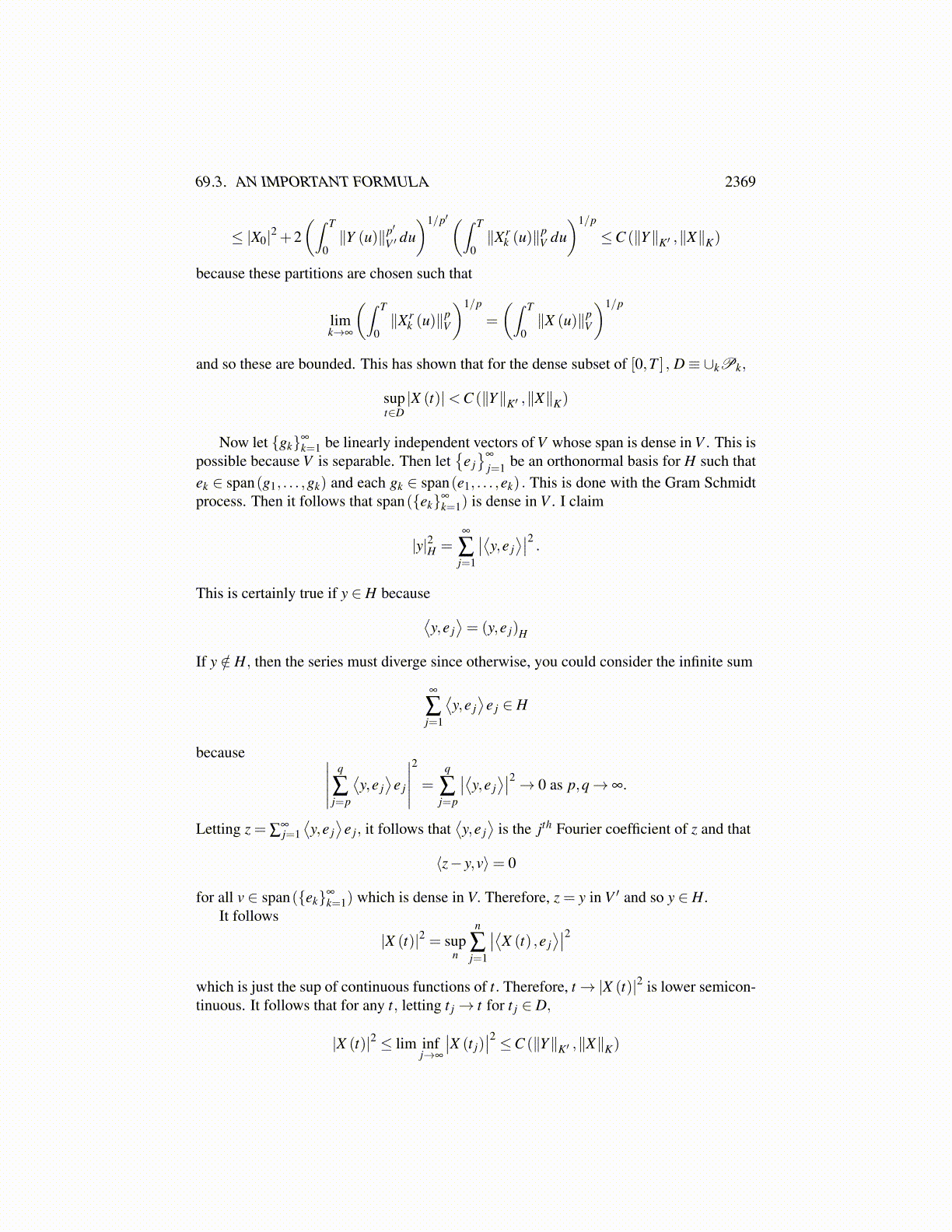
69.3. AN IMPORTANT FORMULA 2369
Lemma 69.3.1 Let Y : [0,T ]→ E, be B ([0,T ]) measurable and suppose
Y ∈ Lp (0,T ;E)≡ K, p≥ 1
Then there exists a sequence of nested partitions, Pk ⊆Pk+1,
Pk ≡{
tk0 , · · · , tk
mk
}such that the step functions given by
Y rk (t) ≡
mk
∑j=1
Y(
tkj
)X[tk
j−1,tkj )(t)
Y lk (t) ≡
mk
∑j=1
Y(
tkj−1
)X(tk
j−1,tkj ](t)
both converge to Y in K as k→ ∞ and
limk→∞
max{∣∣∣tk
j − tkj+1
∣∣∣ : j ∈ {0, · · · ,mk}}= 0.
Also, each Y(
tkj
),Y(
tkj−1
)is in E. One can also assume that Y (0) = 0. The mesh points{
tkj
}mk
j=0can be chosen to miss a given set of measure zero. In addition to this, we can
assume that ∣∣∣tkj − tk
j−1
∣∣∣= 2−nk
except for the case where j = 1 or j = mnk when this might not be so. In the case of the lastsubinterval defined by the partition, we can assume∣∣∣tk
m− tkm−1
∣∣∣= ∣∣∣T − tkm−1
∣∣∣≥ 2−(nk+1)
Theorem 69.3.2 Let V ⊆H =H ′⊆V ′ be a Gelfand triple and suppose Y ∈ Lp′ (0,T ;V ′)≡K′ and
X (t) = X0 +∫ t
0Y (s)ds in V ′ (69.3.15)
where X0 ∈ H, and it is known that X ∈ Lp (0,T,V ) ≡ K for p > 1. Then t → X (t) is inC ([0,T ] ,H) and also
12|X (t)|2H =
12|X0|2H +
∫ t
0⟨Y (s) ,X (s)⟩ds
Proof: By Lemma 65.3.1, there exists a sequence of uniform partitions{
tnk
}mnk=0 =
Pn,Pn ⊆Pn+1, of [0,T ] such that the step functions
mn−1
∑k=0
X (tnk )X(tn
k ,tnk+1]
(t) ≡ X l (t)
mn−1
∑k=0
X(tnk+1)X(tn
k ,tnk+1]
(t) ≡ X r (t)
converge to X in K and in L2 ([0,T ] ,H).